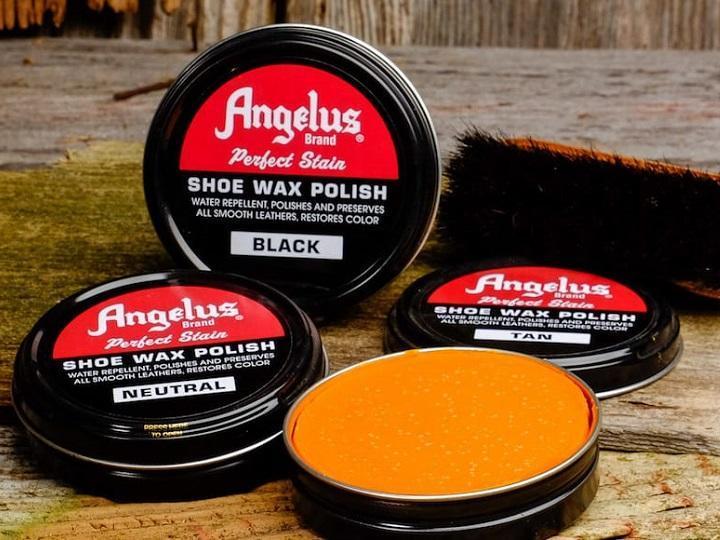Understanding how shoe polish works and what it actually does when applied to your shoes, will significantly improve your ability to take care of your shoes.
Armed with this knowledge, you’ll be able to better select the right polish from the countless options on the market, distinguish between good and bad products, and know when, how, and how much to apply when polishing your shoes.
How does shoe polish work?
Shoe polishes are made of a mixture of waxes, solvents, oils, and dyes. When the polish is applied to your shoes, the friction generates enough heat to melt the paste layer into a viscous liquid which transfers to the leather, flowing through cracks and scuffs. The oils slow down the leather’s oxidation process and keep it supple, while the dyes help with the color.
Initially, the polish looks matte and dull because the rough wax diffracts light at a microscopic level. Only after the polish is done, the wax is melted and smoothed out to reflect the light and the leather gets that shiny, glossy look.
What is shoe polish made of?
Shoe polishes are made of a mixture of waxes, solvents, oils and dyes, in various percentages, based on their type. A blend of waxes with various melting points are used in order to reach a compromise between easy of application and gloss. Some of them contain Gum Arabic as a viscosity stabilizer.
Waxes
Shoe polish contains either natural or synthetic waxes, or a combination of both. The main types of waxes used are:
- Paraffin – a petroleum based wax
- Carnauba – a plant based wax
- Beeswax – an insect based wax
Solvents
Solvents are used to match the wax and make it easier to apply.
- Naphtha – Petroleum distillate
- Turpentine – Pine Tree resin distillate
- Stoddard Solution – Mineral Spirits
Oils
Oils are responsible for protecting the leather, which is why you’ll see them used in most shoe conditioners as well. The main types of oils used are:
- Lanolin
- Mink Oil
- Neatsfoot Oil
- Collagen
Plant based oil like olive oil or peanut oil are not used in shoe polishes.
Dyes
Depending on the color of shoe polish, various dyes are used, the most common being carbon black and azo dye.
Basic types of shoe polishes
Depending on their composition, there are 3 different main types of shoe polishes:
Wax-based Shoe Polish
A Wax-based shoe polish is a hard polish that comes in solid form. It’s composed of waxes (about 20-40%), solvents (around 70%), and dyes (2—3%).
Due to the high content of volatile solvents, wax based shoe polish hardens after the application while still maintain its gloss. It’s harder to get it to shine, but the shine lasts much longer.
Using a wax based shoe polish you can get that spit shine or military shine look.
Cream – Emulsion Shoe Polish
A Cream Polish is a softer polish that contains more oils and less wax, the liquid content being higher and giving it a gelatinous consistency.
Due to the high presence of oils, it can act as a shoe conditioner, which is why some people use both a wax based shoe polish as well as a cream one when polishing their shoes.
The cream polish is ideal for softer leather with a lot of textures because it can get into hard-to-reach crannies and nooks much easier, but you can’t get a spit shone using a cream polish.
Liquid Shoe Polish
Liquid shoe polish has a very low wax content, but instead of conditioning your shoe, it adds a layer of the top to protect it. Longer term, this can cause the leather to dry and crack, so it’s not recommended.
Liquid shoe polish is faster to use though, and the protective layer can easily cover scuffs, which is why many people use it solely for convenience.
Your shoes should be cleaned and dried before polishing because shoe polish is not a cleaning product.
Does Shoe Polish Expire or Go Bad?
No, shoe polish does not expire or go bad, which is why you’ll only see a manufactured date on the product, and not an expiring date. However, if you leave the tin open, the solvents can evaporate and the polish will dry out and crack, making it harder to use or in some cases unusable.

